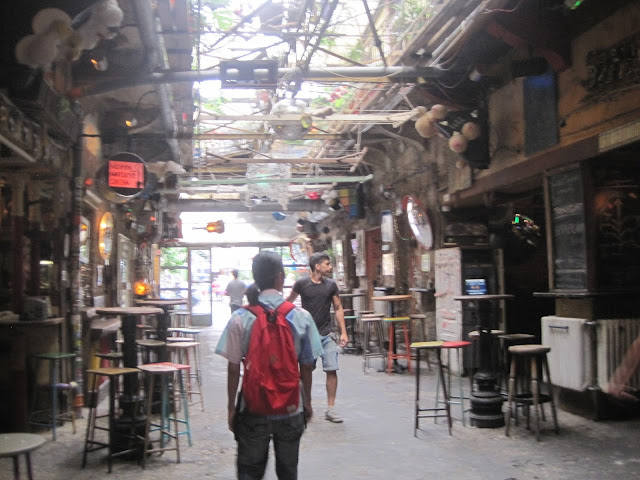 Invitation to the Peace Trail in Europe
Invitation to the Peace Trail in Europe Sixty pairs of iron-made shoes lie silently on the Danube riverbank. Each pair has a story to tell about the person who once wore them. I was in one of the stations of peace trail in Budapest, Hungary, called The Shoes on the Danube bank in which a number of Jews were killed by fascist Arrow Cross militiamen during World War II.
Tourists, young and old, paused at the monument. They looked down and read the commemorative small iron plate on the ground which contains short description of the tragic event. Afterwards, they took some pictures. Some of them even removed their own shoes, and placed them next to the iron shoes. This is how the interaction between the past and present goes through the peace trail.
What is the peace trail?
Peace trail is suggested routes which visitors and residents of the city can explore and revisit rather unknown parts of the city with acquiring knowledge about historical events and struggles for and triumphs of peace and justice. It exists in seven beautiful European cities, such as Berlin, Budapest, Manchester, Paris, The Hague, Torino, and Vienna. Each trail consists of fifteen stations. This is the project which has done by peace institutions in these seven cities. INMP is part of this. So, the Peace Trail exists in the Hauge.
Following the Peace Trail
Fifteen Budapest Peace Trail stations spread to four 2 km.-points of the compass. They have two branches, thus peace pilgrims may spend a day for each branch. If you are a great pedestrian, they can be covered in a day. This is what I did. I started from The Shoes on the Danube Bank. Then, Short distance from the bank, I went to a place where the Swedish Diplomat Raoul Gustaf Wallenberg issued the Schutz-pass which served as Swedish passports. Anyone with these were provided protection from deportation to concentration camps, in the process saving thousands of lives of Jews. However, he was never to be heard again after his captivity by the Soviet Union. Knowing how people actually save lives and risked their own lives makes us reflect of our ptotential contribution to and what we can do for peace.
Then, I went to the inner city and chose to go through Jewish community (former ghetto) where a beautiful Synagogue stands. At the back of the synagogue is a memorial place, especially for those who perished during the World War II. Unmistakably Jewish, restaurants and signs are written in Hebrew.
Historical places exist not only for commemorating the past, but also connecting us with current situations in the world. Statistics would tell us numbers of people who die every year. But it surely does not give us much of human stories. For example, bombings in Syria result to civilian casualties. Who are these people? In the Philippines, in the name of drug war, the thousands of people get killed under the suspicion that they are involved in drug trade. It is ironic how people think that one way to bring security is to kill those who pose potential threats.
To follow the peace trail is like revisiting parts of history which tell stories of human interest. Each station offers an episode of our history where heroism is exemplified by people with extraordinary zeal for others and by ordinary people whose lives were lost. It reminds us that we all have a role to play in pursuit of peace and justice.
So next time you are in one of these seven cities, kindly add the peace trail to your itinerary. It is more than an iron- plate with short description, more than the building, and more than the rush of tourists for pictures. They are our history that shapes us today. When the future beckons, these historical markers can provide directions as we go forward in our shared human journey.



























